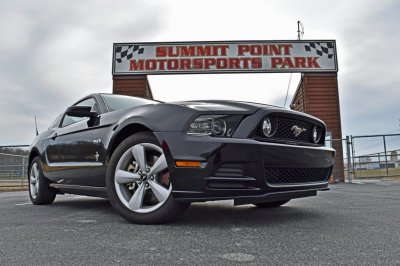This might get moved.
I thought I'd post my experience with fuel economy after 4+ years of the swap.
This info is based on a factory stock, junkyard 5.0 coyote.
Gear change alone has a very noticeable impact on MPG's, and the tune.
So here are my MPG averages with each gear ratio under daily driving:
3.55s 21.88 MPG
3.73s 20.5 MPG
3.89s 19.x MPG
The only change to the tune with the gear change was the gear ratio in the tune, so there are no other variables changed. What else I find interesting with the copperhead pcm, tuning for MPG I was unable to find any gains OR losses.
So the only thing that is left to test is the gears affect on laptimes.
So far, 3.73s were yielding better laptimes at WGI and Summit point main circuits. The next test is in 2 weeks at NJMP Thunderbolt, where I have logs with 3.73s from 2 years ago.
JLT 2 vs stock airbox. As posted before, unable to see any performance difference.
Driving impressions, SOP and sound. Just the gear change, changes the sound of the exhaust. I like the way the exhaust sounds with the 3.55s best, 3.89s worst. I need to dig further into why this is, suspect it has to do with load calculations - further testing/logging needed on this.
Glasstop, what do you think?
I thought I'd post my experience with fuel economy after 4+ years of the swap.
This info is based on a factory stock, junkyard 5.0 coyote.
Gear change alone has a very noticeable impact on MPG's, and the tune.
So here are my MPG averages with each gear ratio under daily driving:
3.55s 21.88 MPG
3.73s 20.5 MPG
3.89s 19.x MPG
The only change to the tune with the gear change was the gear ratio in the tune, so there are no other variables changed. What else I find interesting with the copperhead pcm, tuning for MPG I was unable to find any gains OR losses.
So the only thing that is left to test is the gears affect on laptimes.
So far, 3.73s were yielding better laptimes at WGI and Summit point main circuits. The next test is in 2 weeks at NJMP Thunderbolt, where I have logs with 3.73s from 2 years ago.
JLT 2 vs stock airbox. As posted before, unable to see any performance difference.
Driving impressions, SOP and sound. Just the gear change, changes the sound of the exhaust. I like the way the exhaust sounds with the 3.55s best, 3.89s worst. I need to dig further into why this is, suspect it has to do with load calculations - further testing/logging needed on this.
Glasstop, what do you think?



